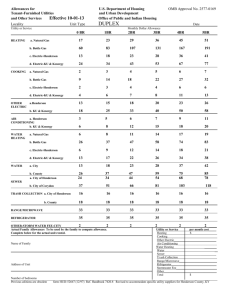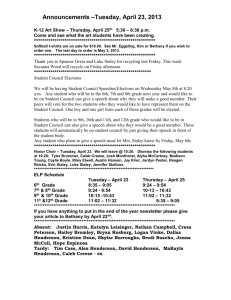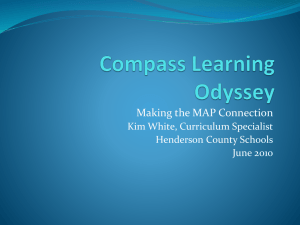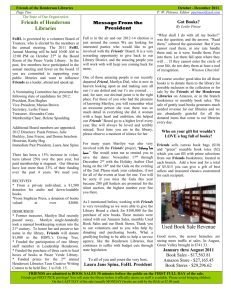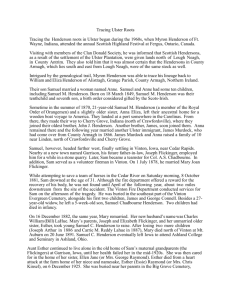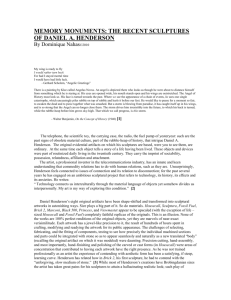Lynn Henderson`s Multiple Cultural Model
advertisement
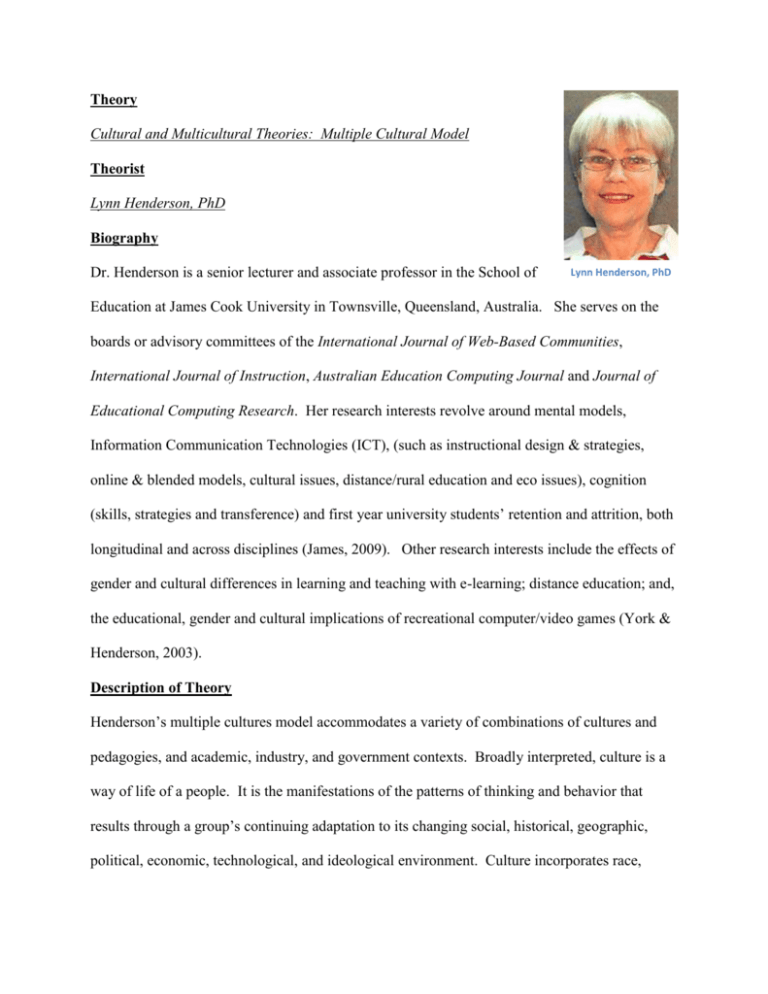
Theory Cultural and Multicultural Theories: Multiple Cultural Model Theorist Lynn Henderson, PhD Biography Dr. Henderson is a senior lecturer and associate professor in the School of Lynn Henderson, PhD Education at James Cook University in Townsville, Queensland, Australia. She serves on the boards or advisory committees of the International Journal of Web-Based Communities, International Journal of Instruction, Australian Education Computing Journal and Journal of Educational Computing Research. Her research interests revolve around mental models, Information Communication Technologies (ICT), (such as instructional design & strategies, online & blended models, cultural issues, distance/rural education and eco issues), cognition (skills, strategies and transference) and first year university students’ retention and attrition, both longitudinal and across disciplines (James, 2009). Other research interests include the effects of gender and cultural differences in learning and teaching with e-learning; distance education; and, the educational, gender and cultural implications of recreational computer/video games (York & Henderson, 2003). Description of Theory Henderson’s multiple cultures model accommodates a variety of combinations of cultures and pedagogies, and academic, industry, and government contexts. Broadly interpreted, culture is a way of life of a people. It is the manifestations of the patterns of thinking and behavior that results through a group’s continuing adaptation to its changing social, historical, geographic, political, economic, technological, and ideological environment. Culture incorporates race, ethnicity, religion, class, gender, values, traditions, language, lifestyles, and nationality as well as workplace and academic cultures (Edmundson, 2006). Any instructional design paradigm is grounded in a cultural context and cultural context is always a variable. Three major issues were explored to substantiate the benefits of the multiple cultures model of instructional design, which has been utilized, especially in Australia, the United States, Canada, and Singapore. They include the limitations of multicultural or internationalization models; the parameters of the various benefits of a multiple cultures model that accounts for various ethnic, class, gender, academic, and workplace sub-cultures in the design of e-learning materials; and designing and adapting e-courses to incorporate behaviorist, constructivist, and social constructivist e-learning and e-teaching (Edmundson, 2006). When the word “culture” is mentioned, we immediately think of ethnicity. A multiple cultural model has validity for students of various (sub)cultural backgrounds. For instance, a business multiple cultural model would involve the corporate culture of the company, the wider economic-political culture includes global influences or a school multiple cultural model would incorporate the academic school culture, the school’s institutional culture, which is set within the culture of an educational system anchored in society’s mainstream culture, and the popular youth culture of the students (Henderson & Putt, 1999). Morris states Henderson proposed a multiple cultural model (MCM) for minority and marginalized groups. In her dissertation, Morris lists the 15 dimensions of Henderson’s model. Henderson changed Reeve’s “cultural sensitivity” dimension to what she called a “multiple cultural contextualization” dimension and posited that dimension as being at the center of all the other 14 dimensions. Morris also stated that Henderson added the dimension of “instructional sequencing” to Reeves’ model (Morris, 2009). (see Figure 1) According to Morris, Henderson’s pedagogical philosophy is divided into two different ranges from instructivism to constructivism. Instructivism emphasizes predetermined learning goals, precision, and specific objectives. The role of the instructor is transmitting the knowledge. Students expect the instructor to initiate the class and provide the learning content and materials. Constructivism focuses on self-directed learning and authentic learning. The role of the instructor is mentor or facilitator rather than presenting abstract knowledge (Morris, 2009). Theory Measurement/Instrumentation Morris could not find an appropriate instrument to measure her study of Asian students’ online learning preferences, but based on Henderson’s multiple cultural model, developed an online learning preference questionnaire. To establish content validity and construct validity, the researcher conducted a correlation coefficient test, pilot study, and exploratory factor analysis. Morris selected 60 items among 94 items using strong correlation scores for content validity. The pilot study and field test were also conducted with both American and Asian students to establish the validity of the instrument (Morris, 2009). Report prepared by: Mary Lou Bledsoe REFERENCES James Cook University (2009), Associate Professor Lyn Henderson. Retrieved September 19, 2009 from http://cms.jcu.edu.au/education/staff/JCUPRD_033015. Henderson, L., & Putt, I. (1999). Theorizing audio-conferencing: an eclectic paradigm. Canadian Journal of Educational Communication, 27(2), pp91-92. Edmundson, A. (2006). Globalized e-learning cultural challenges, pp 130-153. Morris, E. S. (2009). Cultural dimensions and online learning preferences of Asian students at Oklahoma State University in the United States. Oklahoma State University. York, F., & Henderson, L. (2003). Making it possible: The evolution of RATEP – a communitybased teacher education program for indigenous peoples. The Australian Journal of Indigenous Education, 23 (2003), p84. Integrated Multiple cultural sensitivity Epistemology Objectivism Constructivism Pedagogical Philosophy Instructivist Constructivist Underlying Psychology Behavioral Cognitive Goal Orientation Sharply-focused Unfocused Instructional Sequencing Reductionist Constructivist Experiential Value Abstract Concrete Role of Instructor Teacher proof Equalitarian facilitator Value of Errors Errorless learning Learning from experience Motivation Extrinsic Intrinsic Structure (Program Flexibility) High Low Accommodation of Individual Differences Non-existent Multifaceted Learner Control Non-existent Unrestricted User Activity Mathemagenic Generative Cooperative Learning Unsupported Integral Multiple cultural sensitivity Not integrated Figure 1. Diagram of Henderson’s multiple cultural model (MCM) Note : From “Morris, E. S. (2009). Cultural dimensions and online learning preferences of Asian students at Oklahoma State University in the United States, p57. Oklahoma State University. As shown in the diagram in Figure 1, there are 15 dimensions in Henderson’s multiple cultural model for inclusive instructional design: 14 on the horizontal axis and one on the vertical that runs through or across the other 14 (Morris, 2009).
